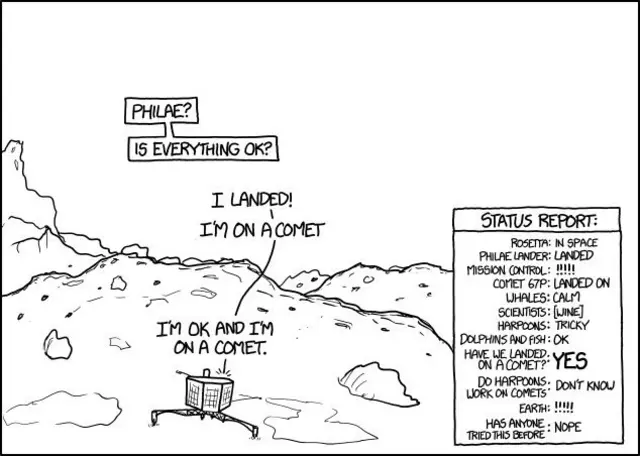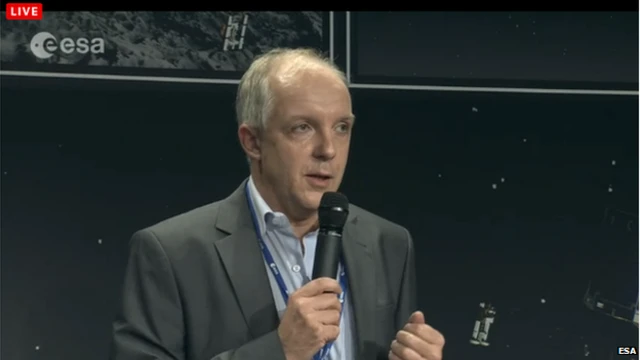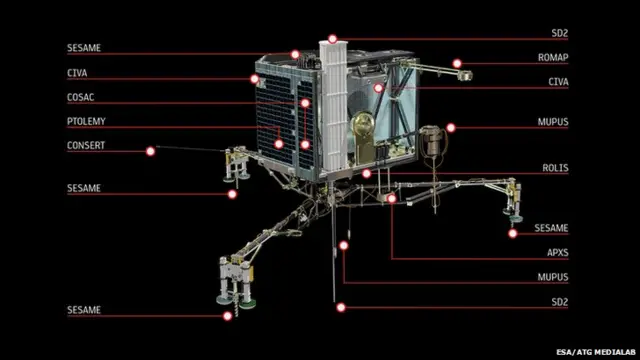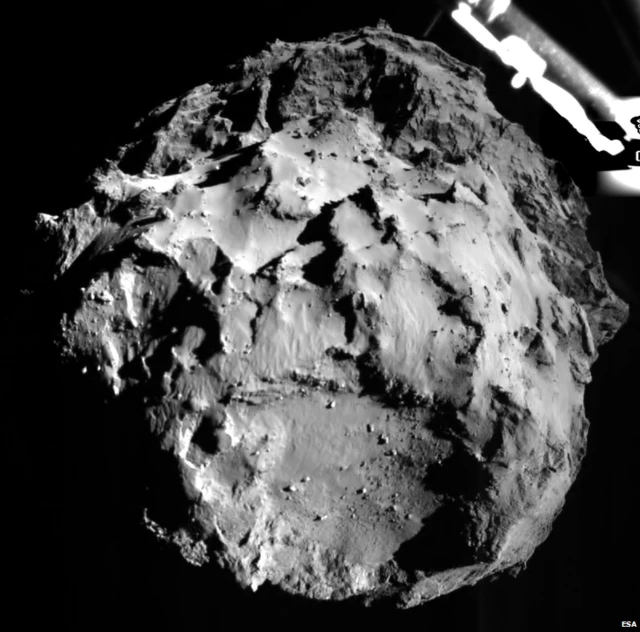Goodbye, for now...published at 19:41 GMT 12 November 2014
Thanks all for tuning in, for what has been an extraordinary day for space and science history. We've enjoyed all your comments but for now that's it from Jonathan Webb, external and Melissa Hogenboom, external on the BBC Science team. Thanks also to our social media colleagues, external.
There will be a full media briefing at 13:00 GMT on Thursday and there will be more comment, analysis and updates on the BBC News science pages.
We leave you with the remarkable "farewell" image of Philae as it dropped away from the orbiting Rosetta craft, towards an uncertain but exciting future.
 Image source, ESA/Rosetta/MPS
Image source, ESA/Rosetta/MPSThe lengthy list of credits indicates just how many people's hard work went into the history-making voyage that culminated in today's events.
Congratulations to them all.




